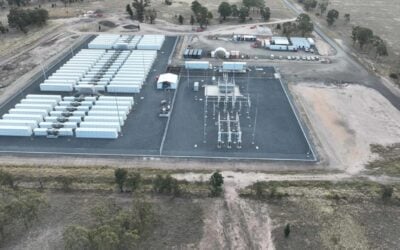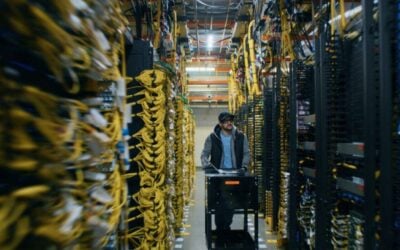
ZincFive, a US company developing nickel-zinc battery technology for stationary storage applications including data centre UPS solutions, has closed a Series D financing round.
The round closed with US$54 million raised, Oregon-headquartered ZincFive said yesterday, bringing the company’s total funding raised since its founding to US$139 million.
ZincFive has claimed its batteries’ nickel-zinc (NiZn) electrochemistry is high power density, fully recyclable with a low carbon footprint and nonflammable.
Another claimed advantage is that even depleted or weakened nickel-zinc cells remain conductive, meaning strings of battery modules continue operating for longer before parts need replacement or maintenance.
Try Premium for just $1
- Full premium access for the first month at only $1
- Converts to an annual rate after 30 days unless cancelled
- Cancel anytime during the trial period
Premium Benefits
- Expert industry analysis and interviews
- Digital access to PV Tech Power journal
- Exclusive event discounts
Or get the full Premium subscription right away
Or continue reading this article for free
The company is targeting high power, short duration applications, generally requiring less than an hour of storage, but that require high discharge rates of which its battery is capable. That means applications like UPS (uninterruptible power systems), starting up heavy industrial equipment or vehicles, or behind-the-meter peak shaving.
Venture capital firm Helios Climate Ventures, an existing investor in ZincFive, led the Series D round, joined by a mix of other existing investors like investment advisor Senator Investment Group and new investors including specialist climate investor OGCI Climate Investments and Japan Energy Fund, which seeks promising energy tech with potential to scale in the Japanese market.
The nickel-zinc startup is among a number of energy storage companies looking to commercialise zinc-based electrochemical systems. Thomas Edison invented the first NiZn battery at the beginning of the 20th Century, but like sodium-ion batteries, the technology has been limited by poor cycle life, a problem ZincFive claimed it has overcome.
ZincFive is currently working to install NiZn batteries for backup power at a Wyoming data centre. The project, which got underway this summer, will see an undisclosed number of ZincFive 37kWh to 39kWh BC Series battery storage cabinets deployed to support the management of 30MW of critical IT loads.
In May the company also launched an integrated microgrid solution combining electric vehicle (EV) charging, hydrogen refuelling and backup power, in partnership with hydrogen generator manufacturer Kaizen Clean Energy and fuel cell maker PowerCell.
ZincFive said the new funding will be used to accelerate its efforts to scale up in markets like data centre UPS and heavy industrial equipment power solutions that it is already targeting, but will also use the cash as growth capital to explore other potential high power application market segments.
The funding will also help it get closer to its goal of building high volume production facilities amid what the company claimed is “rapidly growing customer demand”.
Versatility of zinc
What’s interesting is that there appears to be some divergence in terms of technologies among the different zinc battery players, and therefore also in applications or market segment they are targeting.
For instance, Eos Energy Enterprises is likely the furthest commercialised, with the Pennsylvania-headquartered company producing an aqueous zinc hybrid cathode battery technology. Unlike ZincFive, Eos’ tech comprises units that store up to three hours each, but which can be stacked together to meet durations of up to 12 hours or more.
Another company similarly named to ZincFive, called Zinc8, has a zinc-air battery technology that is currently being piloted for use at a New York apartment complex, with up to 15-hour duration of storage. A 100kW/1.5MWh Zinc8 battery system is being paired with a CHP (combined heat and power) plant, with the project assessing the economics and reliability of the technology.
Then there are also companies using zinc in flow battery electrolytes, like Australia’s Redflow, which has a zinc-bromine flow battery technology, and Chinese company WeView, which is working on a zinc-iron flow battery tech developed by now defunct US company VIZn Energy and itself recently raised US$57 million.
In February, Dr Josef Daniel-Ivad from the the Zinc Battery Initiative industry group wrote a Guest Blog for this site, highlighting the different attributes of zinc that mean it could play a bigger role in the energy transition than it does today.
Along with the technical attributes, zinc battery supply chains could be westernised, reducing the US – and global – industry’s reliance on existing lithium-ion supply chains, which are largely concentrated in Asia and in China in particular, Daniel-Ivad wrote.





